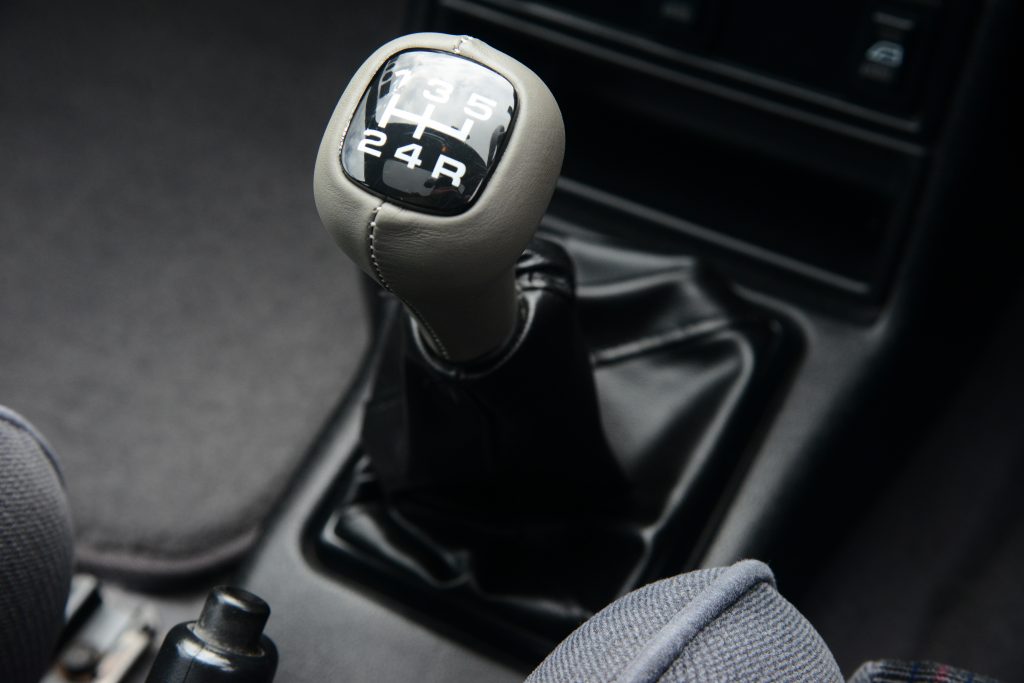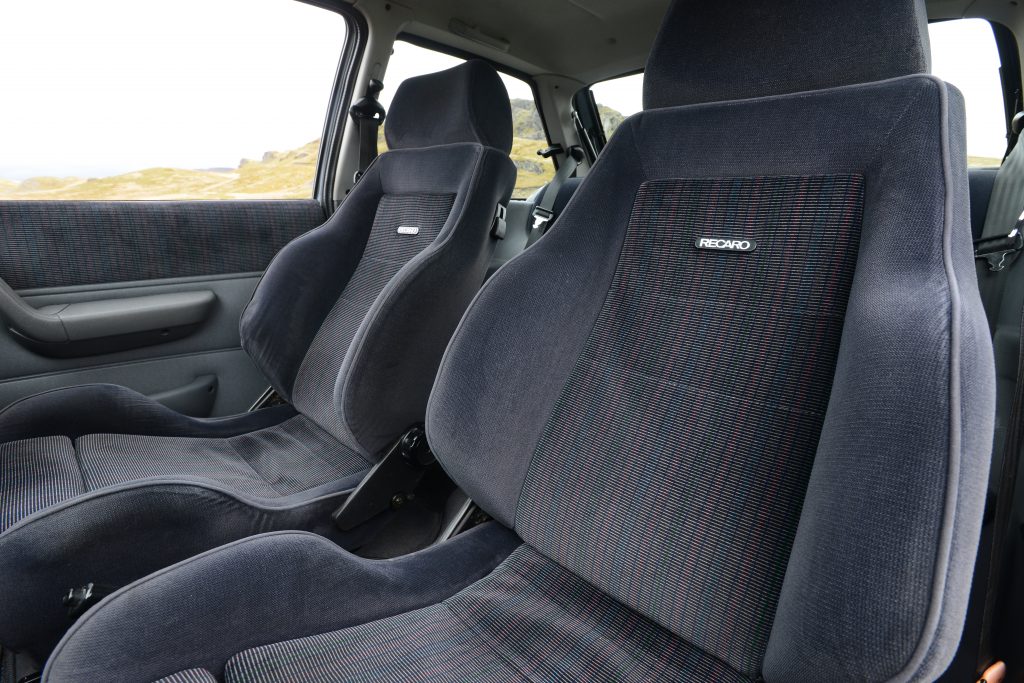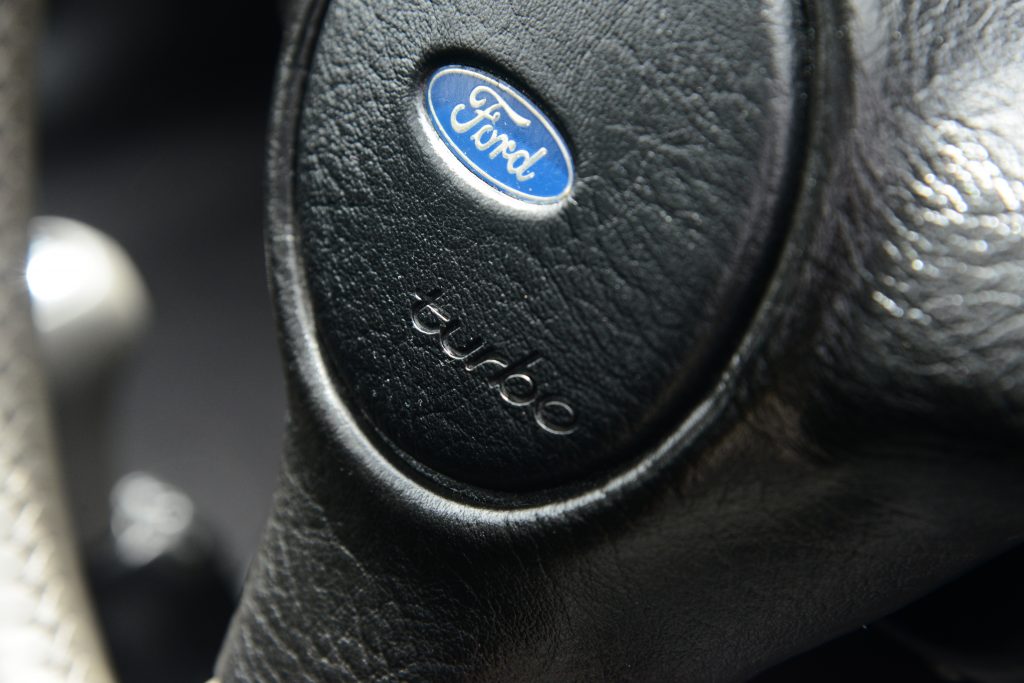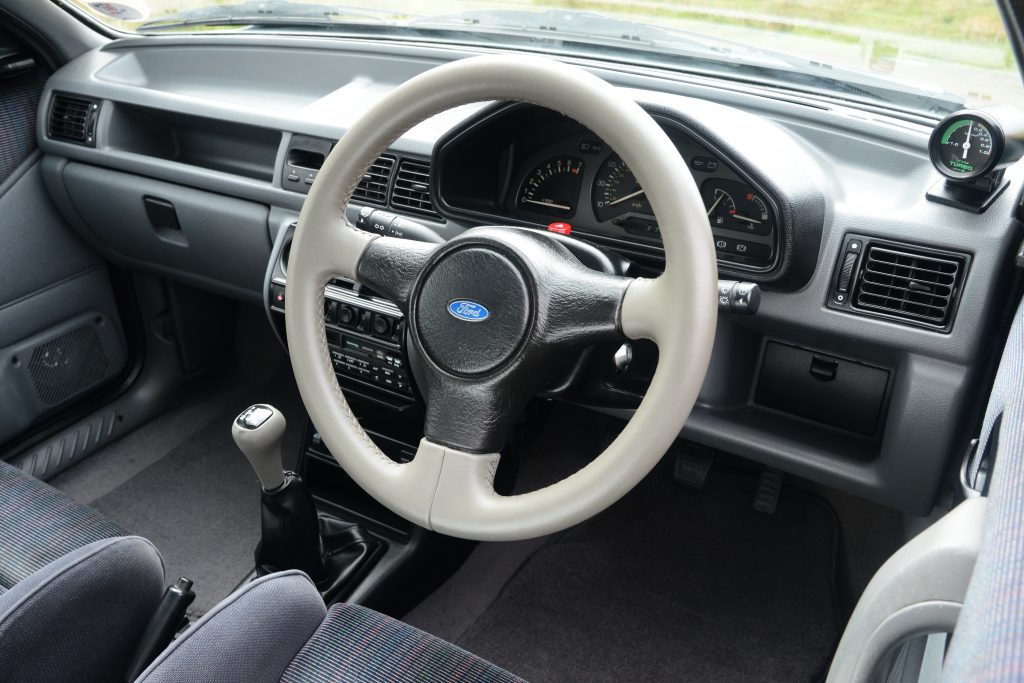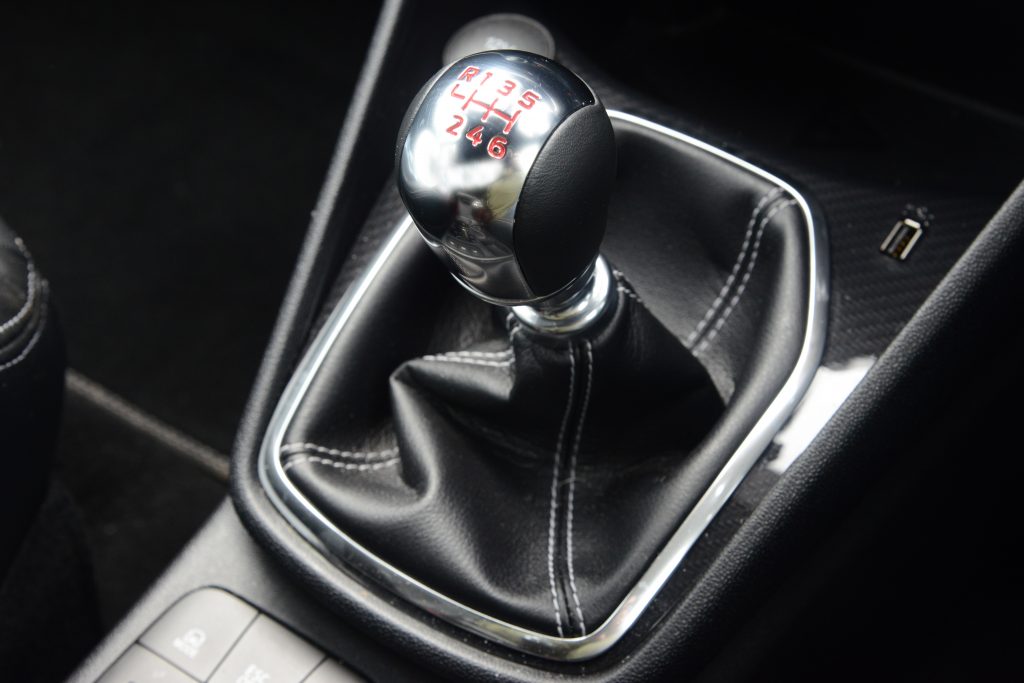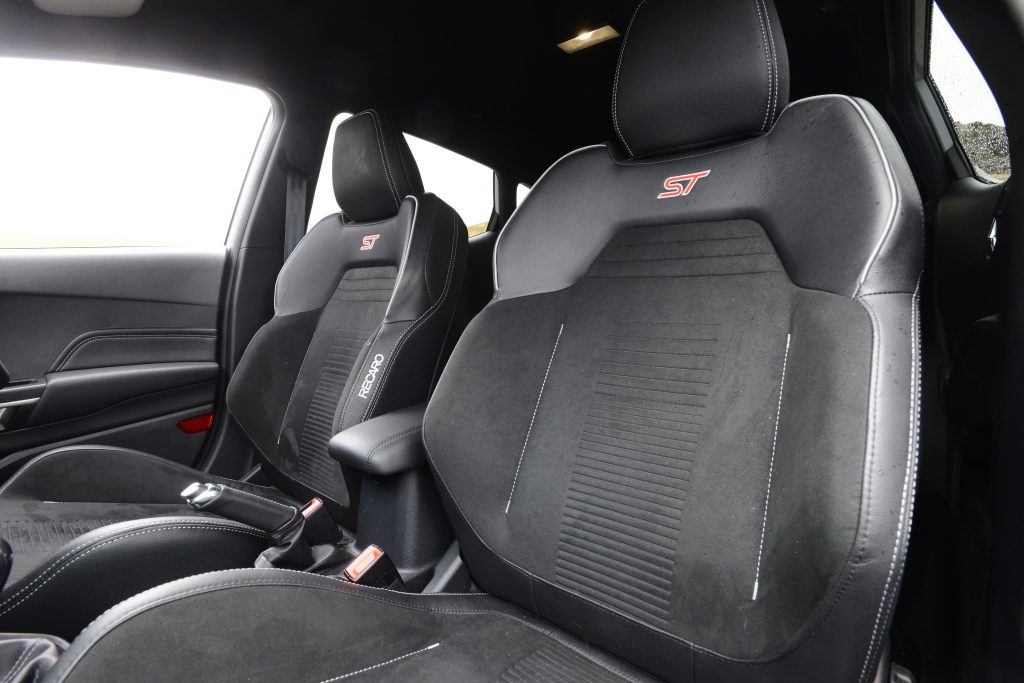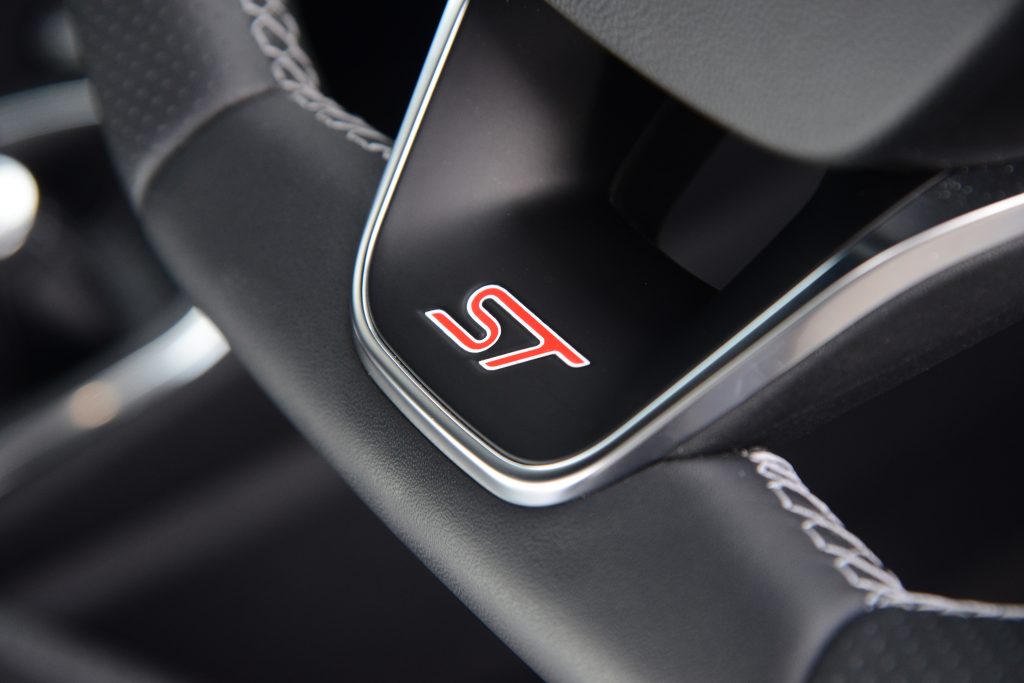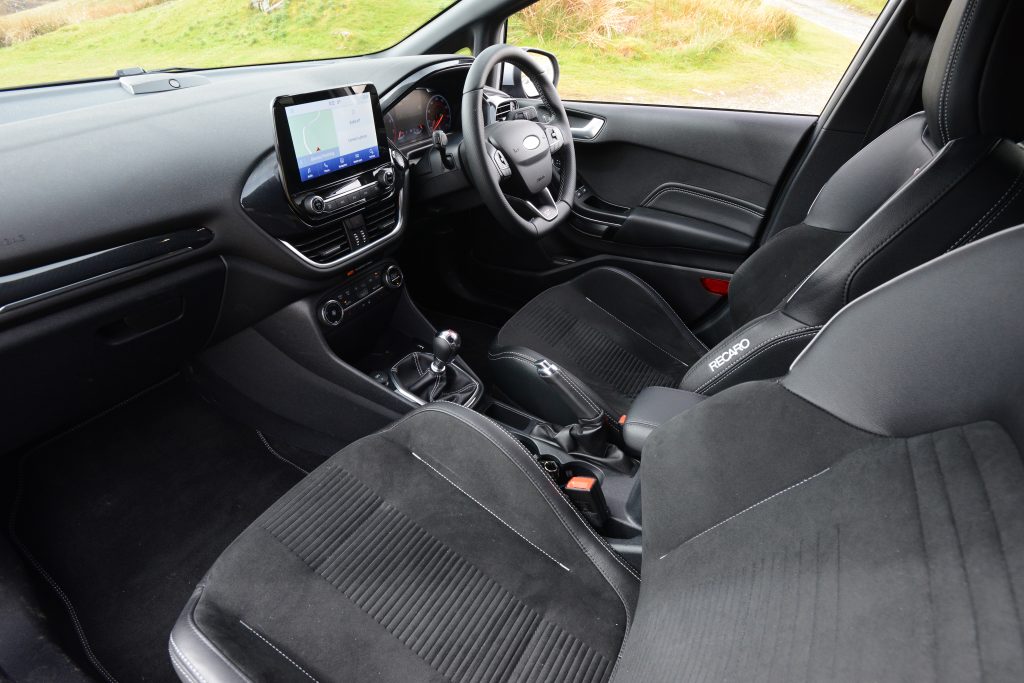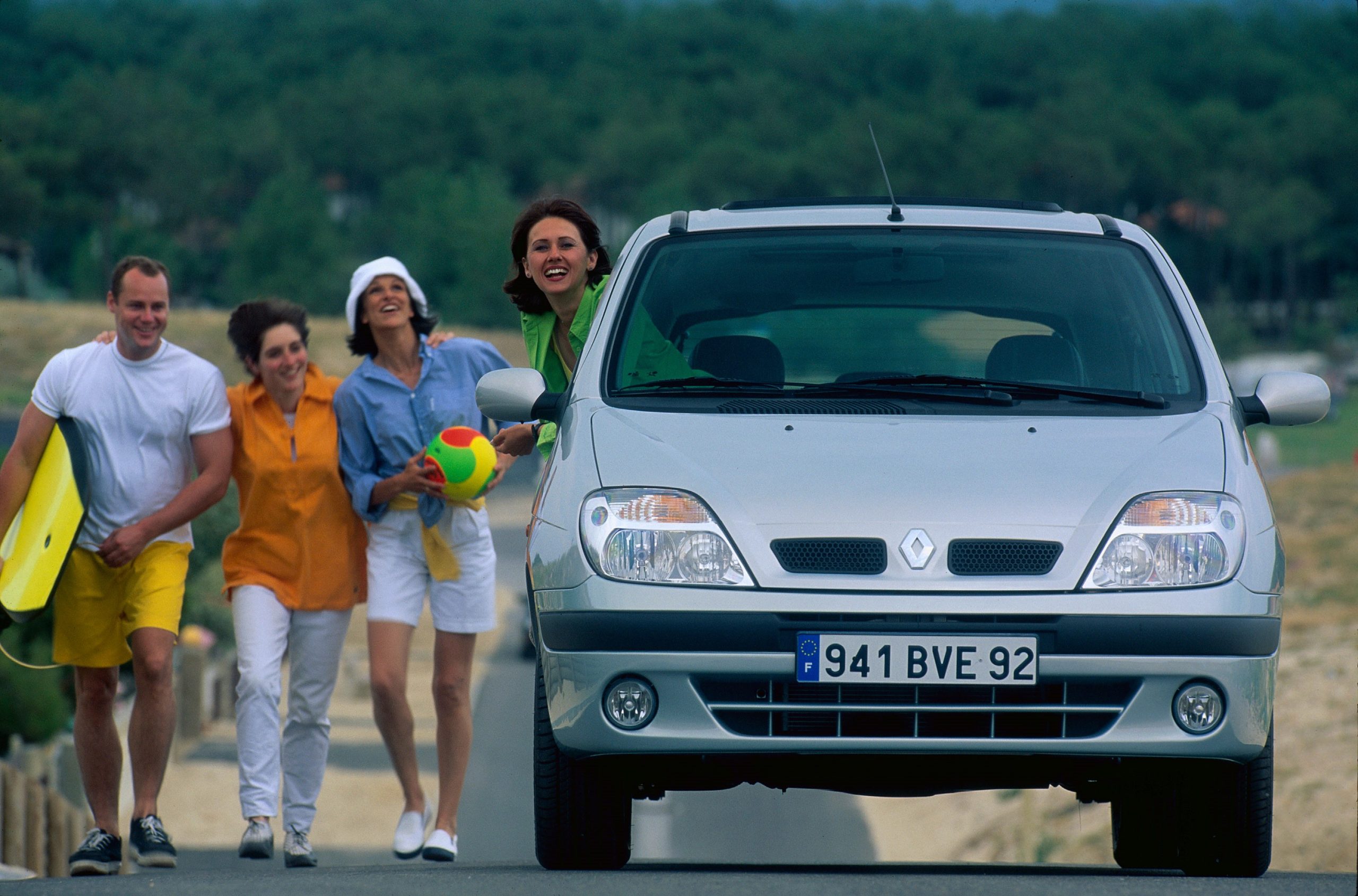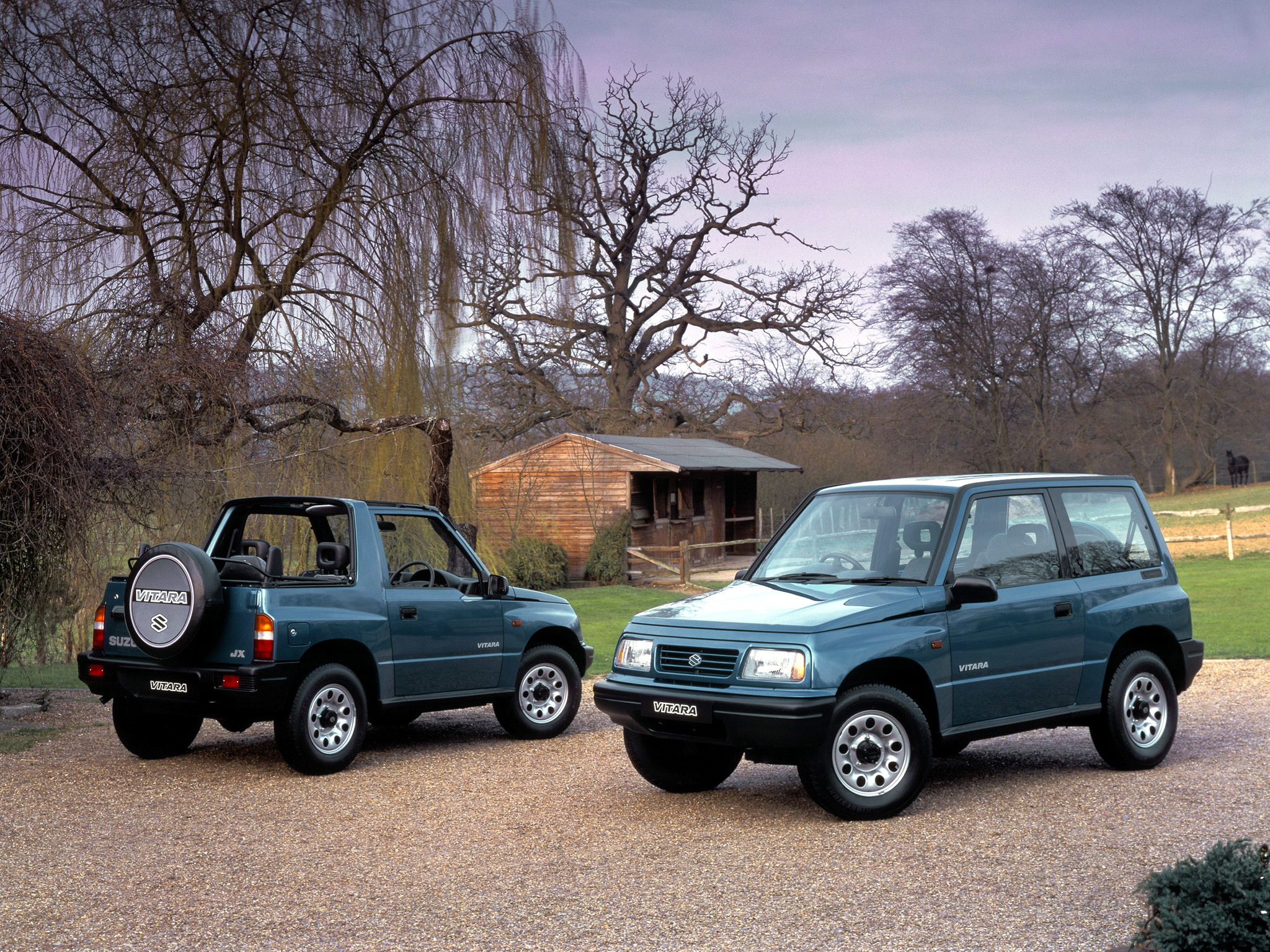Green stripes? How very 2021. However, the stripes don’t signify some sort of newfangled eco-car of the future that runs on grass and emits nothing more harmful than daisies. The stripes are on a 1991 Ford Fiesta, and the chances are, back in the day whenever you spotted a Fiesta with green stripes at the traffic lights, the next thing you’d see is it leaving black stripes on the Tarmac as its driver resorted to boy-racer behaviour.
The stripes in question decorate a Fiesta RS Turbo. They wrap around the bumpers and rubbing strips like a long length of green liquorice laces, beneath the familiar RS Rallye Sport script and not-so familiar italic turbo font on the bootlid, interrupted only by the three-spoke, 14-inch alloy wheels. To complement the look, Ford also fitted green-tinted glass to the RS Turbo, the only model in the Fiesta family to get it.

In 1990, those green stripes told the world that you were the proud owner of one of the fastest hot hatchbacks on the road. The Fiesta RS Turbo and its 1.6-litre, Garrett TO2 turbocharged engine trampled all over the lukewarm XR2i and swept aside the Fiat Uno Turbo ie, Peugeot 205 1.9 GTI and Renault 5 GT Turbo. Its engine kicked out 133bhp, which may not sound a great deal to those that weren’t around in the ‘90s, but made the Fiesta RS Turbo the fastest Ford this side of the Sierra Cosworth.
The car we’re driving is kindly provided for our entertainment by the exceedingly generous Paul Price. It is a rare little beastie. Ford sold 4500 examples of the Fiesta RS Turbo, but somewhat predictably, nearly all have been driven into the ground or, as likely, unintentionally parked in a ditch. About 120 remain, and of those, reckons Price, a handful are original, unmodified cars. He should know, as Price is an RS Owners Club registrar for the model.
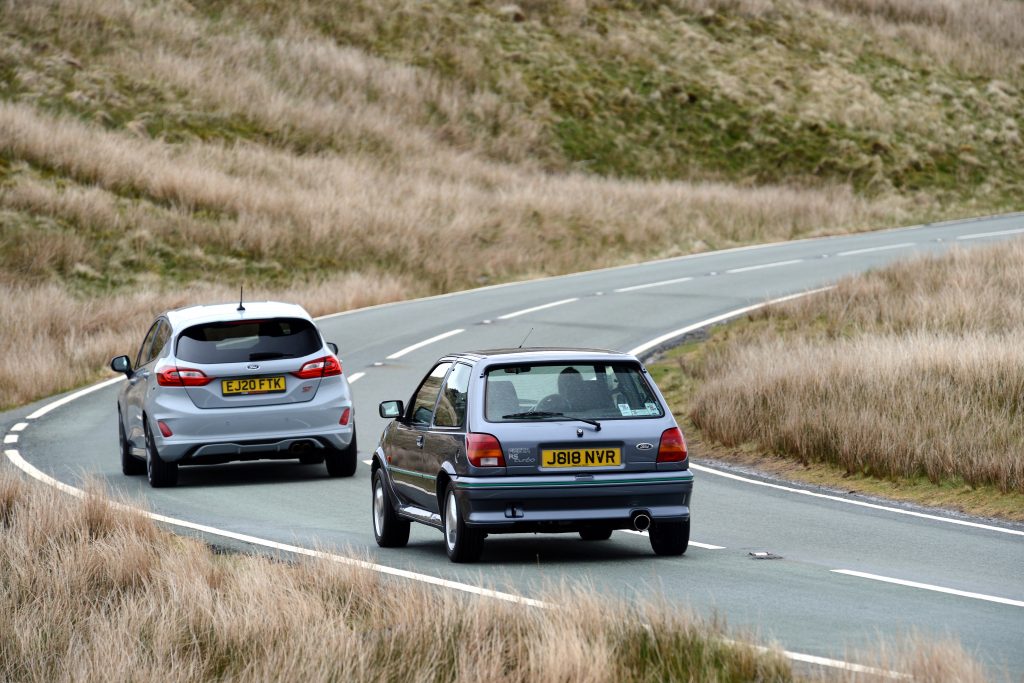
Price is as interested in what we’ve brought along for this Retro Rewind comparison as we are in his Fiesta RS Turbo. It’s the latest Fiesta ST, in ST-3 trim, the ST-3 being significant because it means the Ford comes fitted with the all-important Performance Pack (a £950 option on the ST-2), which includes a Quaife limited-slip differential.
Many a good word has been said about the ST. And having lived with this one for a number of months, I can categorically confirm that it is a truly remarkable little thing that should be on the shopping list of any driver after a fun car – no matter what their budget or size of their collection.
But what of progress? Do the two fast Fords share DNA? Or has so much changed, within the workings of the blue oval brain as well as in the wider context of car development, that you’d never know they were relatives? We headed to the open, empty roads around Bala, in north Wales, to find out what each had to offer.
Ford Fiesta RS Turbo
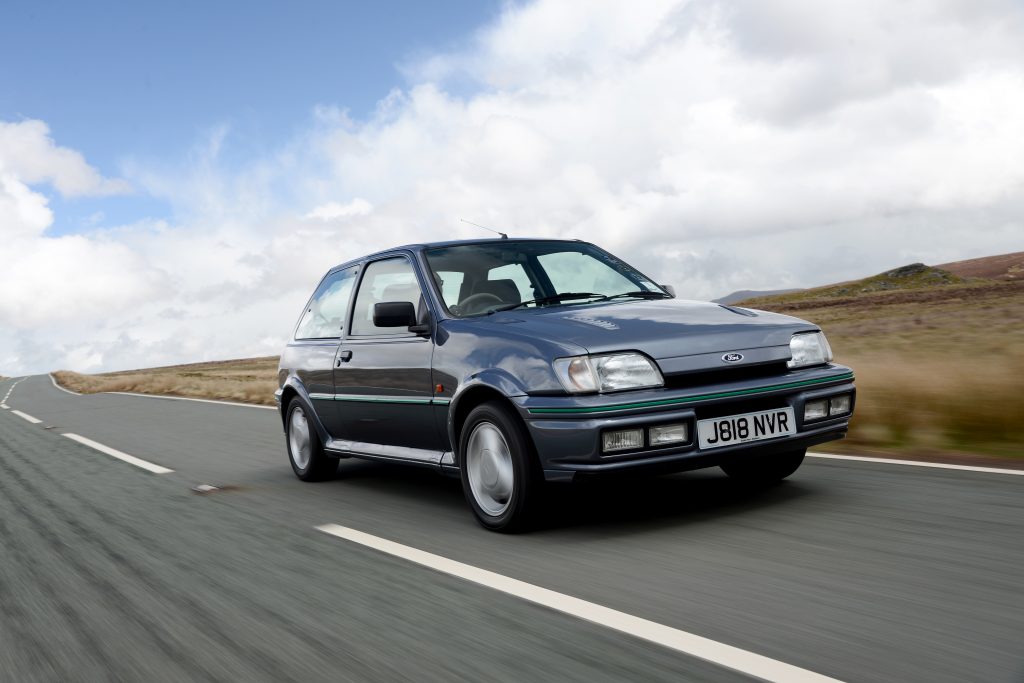
No doubt about it, the Fiesta RS Turbo is a little road burner. The bodykit, driving lamps and vented bonnet give it the sort of showroom appeal that would have had boy and girl racers beating a path to Ford showrooms, and while the wheels are a modest 14 inches they fill the arches because the third-generation Fiesta (BE13, to the geeks) is a wee thing.
It’s 3800mm long, 1631mm across and the wheelbase is 2446mm. By comparison, the new ST measures 4068mm, 1941mm and 2493mm. The ‘old’ timer is also light, with an official kerb weight of 920 kilos – or 910 kilos according to independent measurements taken by Autocar & Motor in 1990. As inevitably as trees grow taller, the new ST has put on weight. A three-door is 1262 kilos, the five-door 1283 kilos, for reasons we all understand.
The magazine also attached its timing gear to the Fiesta RS Turbo, beat the synchromesh on the shift from first to second gear and recorded a 0-60mph time of 7.9 seconds and a mean top speed of 129mph – peaking at 132mph. That’s brisk for the day. For context, a Porsche 911 Carrera 2 of the same era managed 5 seconds and ran all the way to 158mph.
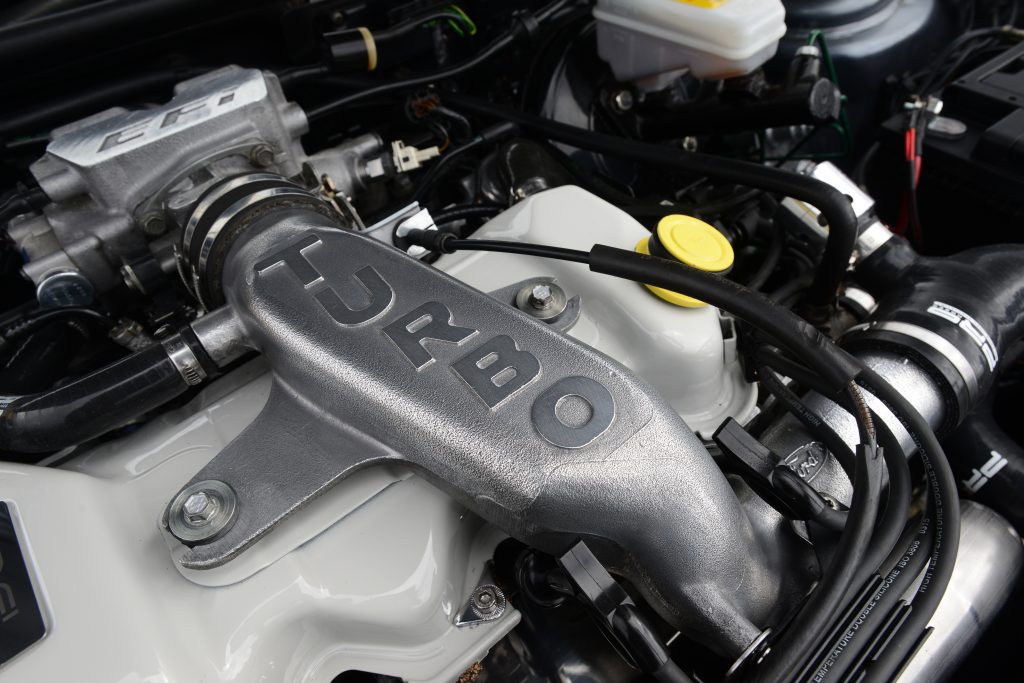
The secret to the Fiesta’s get up and go is, unsurprisingly, its engine. The 1.6-litre CVH unit was the same motor that powered the Escort RS Turbo, but Ford’s engineers switched from a Garrett T03 to a T02 to give improved response lower in the engine’s rev range. Buyers got 133bhp at 5500rpm and 135Ib ft of torque at 2400rpm, which doesn’t sound all that impressive today but it is enough to trouble the front tyres as well as put Ford’s feistiest Fiesta ahead of a chasing hot hatch pack.
Ford’s Special Vehicle Engineering also set to work on everything under the driver’s backside, from the Recaro seats – complete with a period-correct Benetton velour fabric – to the suspension. The XR2i’s oil-filled shock absorbers were binned in favour of gas-filled items, the ride height was lowered, the rear springs were stiffer and the steering rack went from 4.2 to 3.75 turns lock to lock. The finishing touches were Pirelli P600 tyres and the option of anti-lock brakes.
Back in the day, the motoring media weren’t entirely complimentary about the engine or, indeed, other elements of the Fiesta RS Turbo. ‘There is always an inherent roughness to the engine’ reported Autocar & Motor, while the suspension changes didn’t go down a storm, with road testers criticising the ride quality, declaring ‘The ride is simply inept.’ Ouch.
While Paul Price’s Fiesta RS Turbo may look like a garage queen, it is anything but. He bought it in 1996 as a one-owner car, and has taken it to 170,000 miles. It wants for nothing, mechanically, is in concours condition (a respray has been undertaken in the past) and Price says driving it makes him feel young, and ever so slightly yobbish, again.
Having jumped from the ST into Paul Price’s RS Turbo, and settled behind the grey leather-trimmed steering wheel with its turbo script, several things are striking. Predictably, the view out is excellent, as the glass area is so expansive, with a shallow belt line, low dash and A-pillars that are barely any thicker (or stronger?) than a breadstick. You can see your surroundings with refreshing clarity, and the additional sight lines this opens up through a bend or in most everyday driving environments should be worth at least an extra star in a Euro NCAP crash test, because you stand a better chance of spotting and, potentially, avoiding a hazard in the first place.
Sure enough, on the move the older Fiesta is more instinctive to place on the road. Your hands follow your eyes, whereas in the new ST it can often be like playing a game of pin the tail on the donkey; you can’t see through corners, or back over your shoulders for that matter, because the pillars are so broad, so you are forever faced with blindspots.
And it is quick. There is some turbo lag but that is in the context of today’s clever little engines. Back in the day this would have been quite acceptable, with plenty of boost from around 2,300rpm. You just have to time the application of your right foot carefully, applying it slightly earlier than you would in a modern machine to ensure you zip nicely out of a corner.
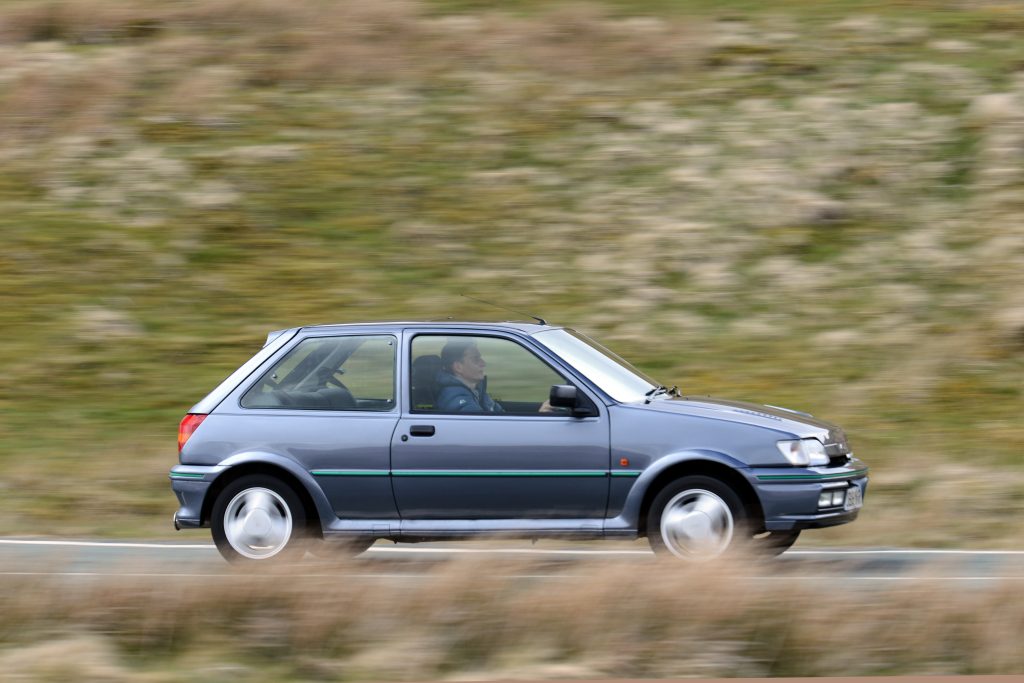
The brakes are surprisingly game, the gearchange less so. Its long lever and equally long throw with vaguely defined gates illustrates how much progress the likes of Ford has made in such areas of tactility.
At parking speeds, the steering is very heavy with no power assistance but comes alive as the pace picks up. It’s not the most precise but it does tell you what the nose of the car is up to, and in second and third-gear corners on a damp day the nose is involved in a tug of war, darting one way or the other if the front tyres lose traction. To be fair, Price spent a long time looking for the correct size tyres with the right ‘V’ speed rating, and ended up with the only choice available – Accelera rubber, an Indonesian brand – which may go some way to explaining why the front can wash out under power.
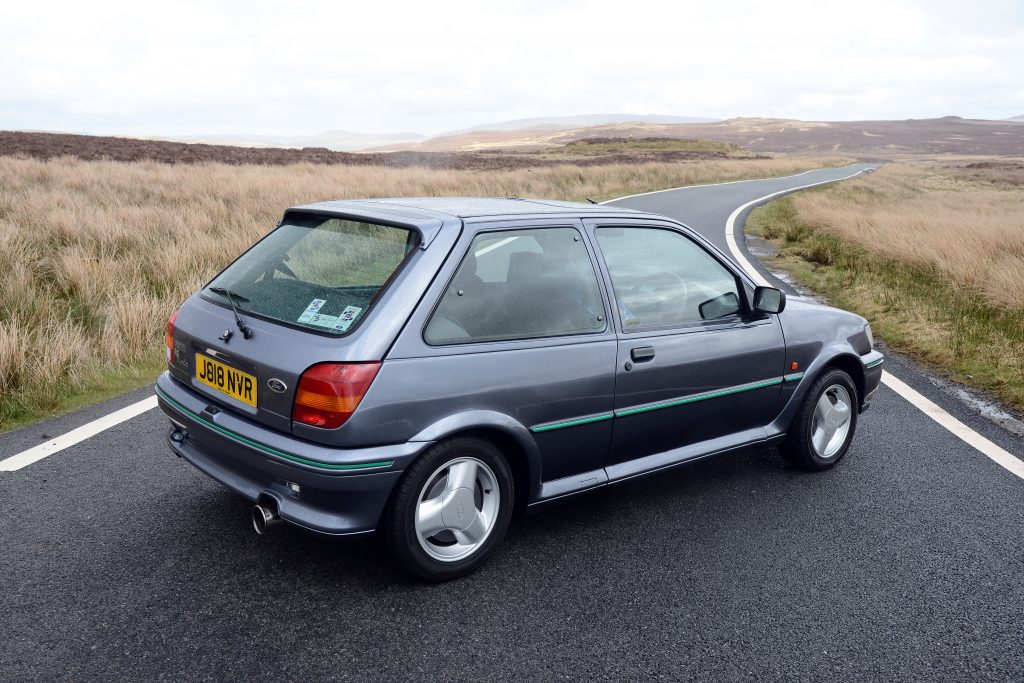
There isn’t the poise to the chassis that you’ll get from a Peugeot 205 GTI or Renault 5 GT Turbo. And sure enough, the four-cylinder turbo engine is noisy. But it’s loud in a raucous, we’re having a good time way, and with so much feedback coming through the steering and the seat of your pants you still feel inclined to drive the 30-year old hot hatchback in the manner it was designed for.
Like being on the football terraces and singing along in support of your favourite team, the Fiesta RS Turbo is loud, just a little uncouth and a whole lot of fun. If you fall into the fast Ford tribe, you will love every moment of it.
Ford Fiesta ST-3
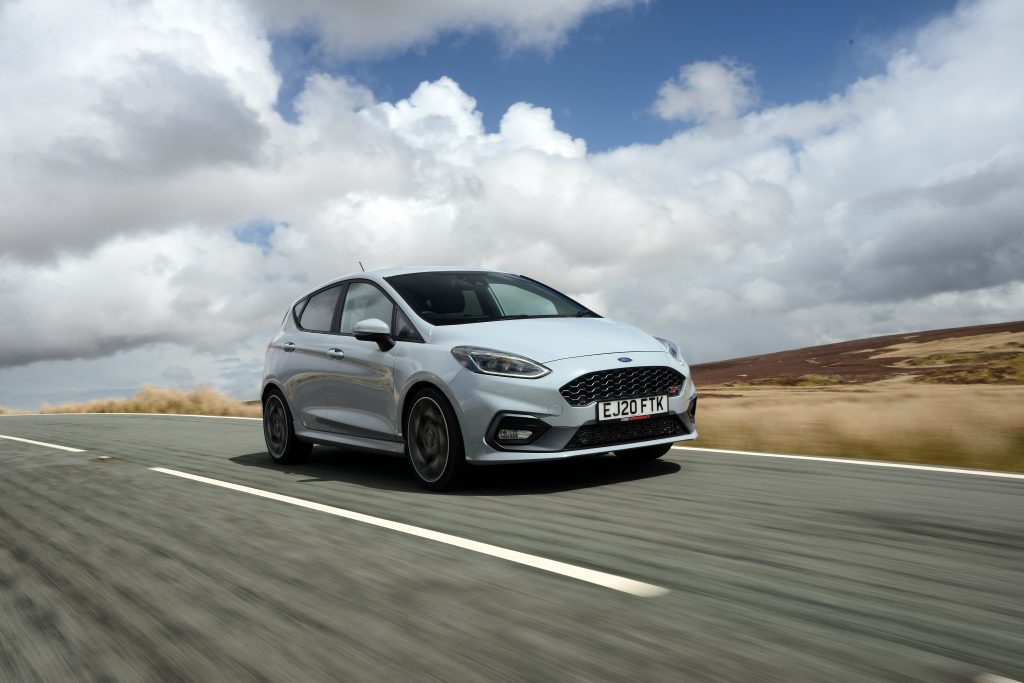
When new, in 1990, the first turbocharged Fiesta cost £11,950. Adjusted for inflation, the Bank of England says that’s equivalent to £27,776 today – making the latest Fiesta ST something of a bargain when you consider the more affordable ST-2 starts from £21,995, the ST-3 from £24,580.
That’s quite remarkable. It offers so much more. More power, more torque, a bigger footprint, more cabin space, a raft of creature comforts and safety features, and – as we will find – an astonishingly good driving experience.
That bigger footprint may result in extra weight but hold your horses for one second, naysayers. The old timer musters 144bhp per tonne, the ST serves up 156bhp per tonne. That’s progress in the right direction, surely?
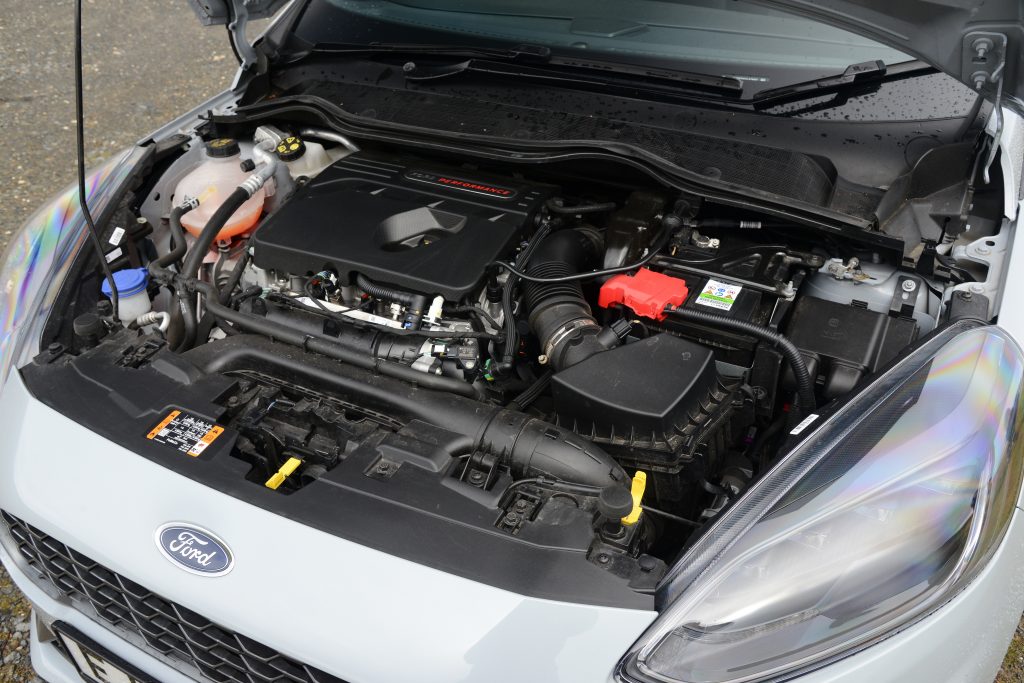
Responsibility for this comes from the engine. Despite having one fewer cylinder and just 1.5 litres, it delivers 197bhp. And look at the torque. There’s been a huge jump over the two decades, from 135Ib ft at 2400rpm in the RS Turbo to the ST’s 214Ib ft from 1600rpm right through to 4000rpm. The difference is oh-so telling when you come to drive the cars back to back.
The aluminium, three-pot motor in the ST is an adorable little thing. It sounds wonderful, with the off-beat thrum of a 911 flat-six or Quattro five, picks up almost the moment you lean into the throttle and sends the ST surging down the road from laugh-out-loud-low rpm. It is positively puppy-like in its enthusiasm.
Wherever you are in the rev range, there is a generous helping of torque and power – and as good as no turbo lag. Change up a gear early and the engine pulls willingly; hold onto the gears and it happily chases the red line. It’s a cracker.
Equally cracking, it has to be said, is the way the rest of the package works to such good effect around that engine. The electrically assisted steering is as quick as racks get, so quick, in fact, that the ST can take a little time to settle into after driving something else. That’s partly because as soon as you work the steering, the rest of the chassis responds so eagerly, pivoting around the nose of the car with extraordinary agility.
Switch the driving mode to Sport and it will lift an inside rear wheel on the way into corners without the ESP stability control intervening. Turn the ESP off entirely, by Selecting Track mode and then cancelling the ESP, and you’ll have a ball in the ST as you gel with a car that is as faithful and communicative as hot hatchbacks – or indeed any type of car – come.
There are times where even the fitment of a limited-slip differential can’t stop both front wheels spinning up, more often than not in tight, second-gear bends on a rainy day, and the ST does exhibit the dreaded axle tramp if you aren’t sympathetic at that moment. But not always.
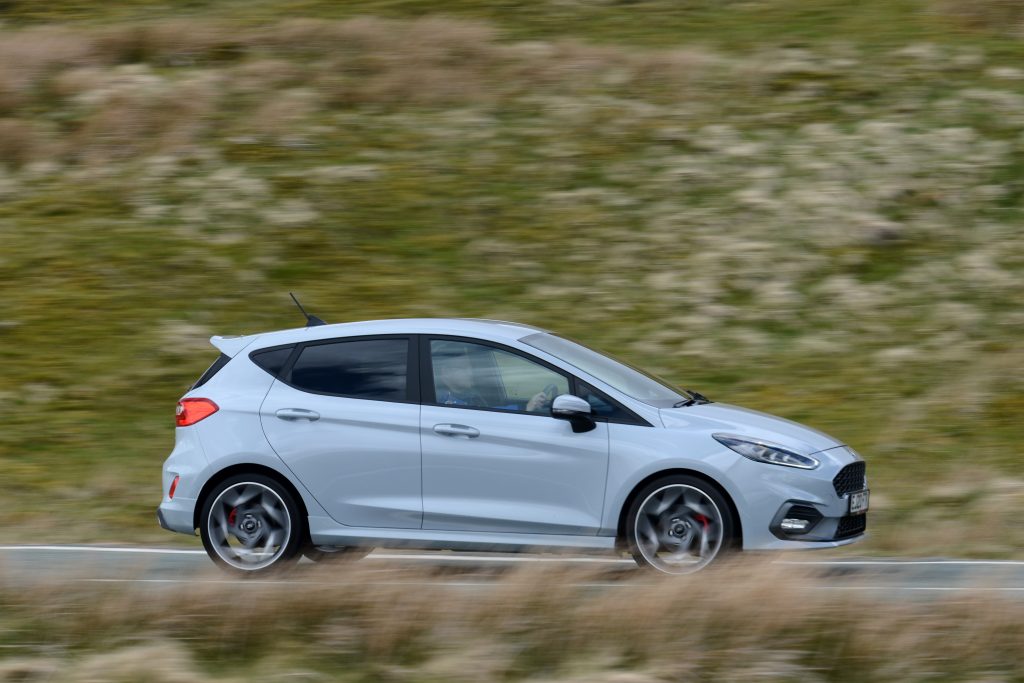
The damping is remarkable, refusing to get flustered, the brakes resist fade impressively and the Michelin Pilot Sport 4 tyres seem to have a wide operating band where you can dance merrily between grip and slip. All in all it’s jolly good fun.
As Hagerty has said before, you can trace all the good work that has gone on here to around the time when Ford was panned for the last of the Escorts. Since then, new management steered the engineering and design in new directions, and that legacy lives on in the way Ford products are, by and large, so good to drive.
Like the RS Turbo, the ST features a pair of fantastically supportive Recaro seats. But that’s where the similarities end. The high waistline and huge pillars can make you feel quite cocooned, while the quality of the plastics and standard of fit and finish show how much small cars have come on in the past two decades. (Although the less said about the occasional hiccups of the Ford Sync infotainment system, the better.)
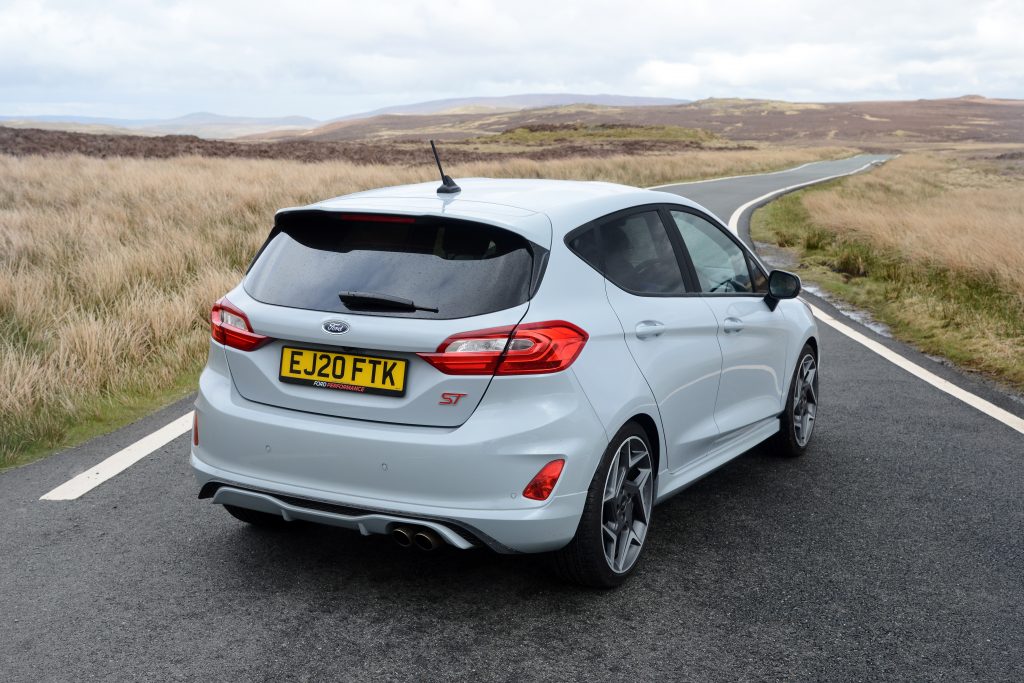
In many ways, the spirit of the Fiesta RS Turbo is alive and kicking in the latest ST, but Ford – and its baby – has come a long way since then.
For once, there can be no accusations of wearing rose-tinted spectacles or droning on about the good old days. With the exception of how difficult it is to see out of, the modern machine is plain better in every way. That isn’t always the case in our Retro Rewind comparisons, and we’re grateful that Ford has continued to raise the bar.
Fast facts: Ford Fiesta RS Turbo v Ford Fiesta ST-3 5dr
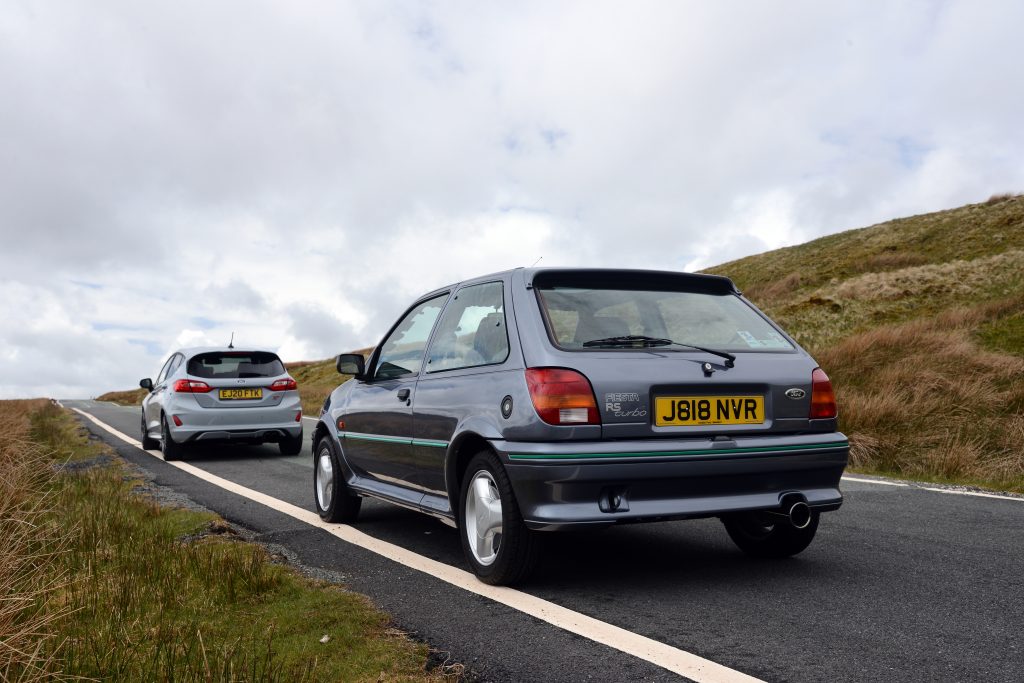
Price: £10,000 to £23,000 (via Hagerty Price Guide) vs £24,580
Engine: 1.6-litre 4-cyl turbo vs 1.5-litre 3-cyl turbo
Power: 133bhp vs 197bhp
Gearbox: 5-speed manual vs 6-speed manual
Kerbweight: 920kg vs 1283 kg
0-62mph: 7.9 secs vs 6.5 secs
Top speed: 129mph vs 144mph
Fuel economy: 33.8mpg (Autocar touring result) vs 47.1mpg
Read more
Future Classic: Ford Puma
50 years later, Ford’s Transit Supervan is still outrageous
Buyer’s Guide: Ford Mustang (1964-1973)

